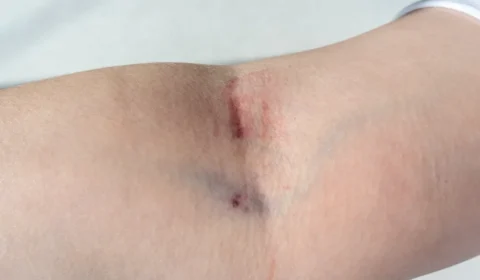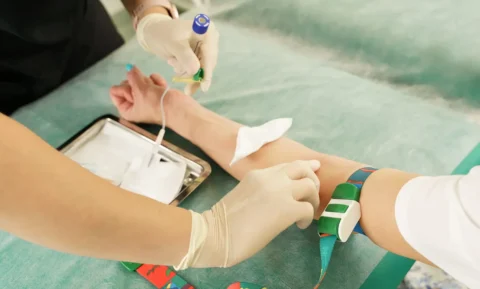Nowadays, there are a lot of individuals who are becoming more interested in anti-aging and skin care services and it is spurring the growth of the medical spa and aesthetics industry. This could also mean that there’s an increase in demand for aesthetic providers and cosmetic nurse practitioners who can cater to the needs and wants of the patients.
So what do you need to do to become certified aesthetic nurses? Nurses who are interested in aesthetic medicine and performing cosmetic procedures should undergo a specialized training course and get their certification as aesthetic nurse specialists. During the training, you will learn about the different cosmetic treatments, best practices, and guidelines on patient care and management.
Training to Become an Aesthetic Nurse Practitioner: What You Need to Know
In any dermatology clinic or aesthetic practice, cosmetic nurses play an important role in the administration of procedures, management of patients’ needs, and providing pre- and post-treatment care to clients. They work closely alongside cosmetic physicians, surgeons, and dermatologists to ensure quality aesthetic care and service.
Generally, an aesthetic nurse is a registered nurse who has completed a specialized course and hands-on training on cosmetic procedures. In an aesthetic training course for nurses, they can expect to learn about different topics such as:
- The newest trends and technologies in skincare and aesthetic treatments
- The basics of the facial anatomy and the common treatment sites for injectables
- Best injection techniques and practices for Botox and dermal filler procedures
- How to assess a patient’s skin condition to identify their specific concerns
- How to screen and evaluate patients to determine if they are a good candidate for an aesthetic procedure
- Familiarization with the different tools and devices used for aesthetic treatments
- Protocols on preparing and sterilizing medical tools and equipment
- Instructions on pre- and post-operative care
What Are the Responsibilities of Aesthetic Nurses?
Aesthetic nurses may handle the same tasks and responsibilities as registered nurses. But they may also have specific duties and additional roles depending on what is assigned to them by the cosmetic physician in their practice. Here are some of the day-to-day tasks included in the job description of an aesthetic nurse practitioner:
1) Skin assessment, medical screening, and initial interview with patients
Before any procedure, an aesthetic nurse will schedule an initial consultation with the patient. It is part of their responsibility to evaluate medical history and conduct screenings to identify the different factors that contribute to the patient’s specific skin concerns. Upon consultation, they will prescribe the appropriate cosmetic procedures that can address the particular condition.
2) Preparation for the aesthetic treatment
Aesthetic nurses are also trained in preparing patients for their procedures. This can include reminding clients of pre-procedure instructions and managing expectations about the results. On the day of the treatment, an aesthetic nurse is also in charge of preparing the treatment area, including cleansing and applying topical anesthetics. They will also prepare the tools needed for the procedure and mark the injection or treatment sites.
3) Administration of the cosmetic procedure
An aesthetic nurse practitioner can also perform the treatment under the supervision of a cosmetic physician. As long as they have completed their medical aesthetics training, they can also administer injections, laser procedures, chemical peels, and other facial rejuvenation procedures.
4) Post-treatment recovery and aftercare management
Although most cosmetic procedures are minimally invasive and have no downtime, aesthetic nurses will also assist patients through their recovery. They will follow up and monitor patients if they’re experiencing adverse side effects and other complications from the treatment. They will also provide aftercare instructions and help ensure that patients get the best results from the procedures.
Important Skills to Have to Become an Aesthetic Nurse Practitioner
In addition to getting proper aesthetic nurse training, there are also some soft skills and traits that are needed to become successful as a cosmetic nurse. These skills are important to ensure that you’re providing the highest standard of care to the patients. Here are some of the important qualifications for an aesthetic nurse:
1) Good communication skills
Aesthetic nurses spend the majority of their time interacting with patients and attending to their concerns. Because of this, they need to have strong interpersonal skills to be able to clearly communicate the details of the procedure, explain what the results and recovery will look like, and manage their expectations.
Since they’re also in charge of consultations, aesthetic nurses should also be good listeners in order to determine which treatment is ideal for their patients. They should be able to ask the right questions to get a better understanding of the patient’s issues.
2) Precision and attention to detail
When patients come in for cosmetic procedures, it’s important to give them peace of mind and assure that their skin is in good hands. During treatments, an aesthetic nurse should work carefully and provide impeccable attention to the steps to ensure the safety of the patient. They should also have knowledge about facial anatomy so they know where to properly administer the treatment and provide optimal results.
3) Ability to work with a team
Being a good team player is an important skill to have for any medical professional. This is because cosmetic procedures typically involve more than one person overseeing the treatment. During a treatment session, a patient may be seen by an aesthetic nurse, cosmetic doctor, and physician assistant in one room.
That’s why it’s important for any aesthetic practitioner to have good coordination skills and know how to collaborate with other members of the cosmetic team for a smooth and successful treatment.
4) Experience and familiarity with different aesthetic tools
Knowing how to handle specialized cosmetic tools is also a must-have skill for any aesthetic practitioner. If you have a good understanding of which tools to use for a particular procedure, you can reduce the possibilities of complications and effectively provide the results that your patients want.
Overview of the Process to Become an Aesthetic Nurse Practitioner
Just like most medical courses, it can take years for an individual to become a certified aesthetic nurse practitioner. You will need to undergo several steps before you can join an aesthetic practice and perform procedures. Here’s what you need to do to become an aesthetic nurse practitioner:
1) Complete a registered nurse degree
The first step is to complete a four-year Bachelor’s of Science in Nursing program or finish a two-year Associate’s Degree in Nursing. You may also opt to pursue continuing education and apply to a graduate school to earn a Master of Science in Nursing.
2) Take and pass the NCLEX-RN
After obtaining your registered nurse degree, you need to sign up for the National Council Licensure Examination or an NCLEX-RN test. This is a required national test for all nursing school graduates and those who pass the exam will become licensed nurses in their state.
3) Get advance education from an accredited Nurse Practitioner program
Once you’re licensed, you can choose to start your career by applying to a hospital, private healthcare practice, or medical organization. However, if you want to become an aesthetic nurse, you should pursue additional training from an accredited Cosmetic Nurse Practitioner program or earn certification through advanced aesthetic courses.
4) Gain aesthetic nursing experience
Upon completion of a specialized aesthetic training course, the next thing to do is to put your skills into practice by applying to medical spas and dermatology clinics. Working with board-certified cosmetic physicians is the best way to further hone your knowledge and skills to become a more competent and effective aesthetic nurse practitioner.
Common Treatments That Aesthetic Nurses Can Perform
Most aesthetic nurse practitioners are certified and trained to perform a wide variety of minimally invasive cosmetic procedures for the skin and body. Here are some of the common services that they can administer:
1) Botox Injections
Botulinum toxin injections are one of the most top performed aesthetic treatments every year. This treatment is usually given to eliminate the appearance of wrinkles and fine lines on the skin. It works by relaxing the facial muscles and temporarily stopping contractions to soften and prevent wrinkle formation. Since it’s a toxin, it requires advanced Botox training and knowledge on how to prepare and dilute the injections for safe and effective treatment.
2) Dermal Fillers
Aesthetic nurses can also administer dermal filler procedures. Fillers are another great option for erasing wrinkles but they can also help restore lost facial volume and improve the skin’s plumpness. In addition to aesthetic nurse classes, you may also have to apply for dermal filler training where you’ll learn about the different types of filler materials and injection techniques to properly place them beneath the skin.
3) Laser Treatments
An aesthetic nurse can also perform laser services to address various problems such as unwanted hair, acne scarring, uneven skin tone and texture, wrinkles and fine lines, and pigmentation issues. You may be required to take a specialized training course where you’ll learn about the latest trends in laser therapy, different types of laser devices, and techniques for the procedure.
4) Chemical Peels
A chemical peel treatment is another great cosmetic procedure that helps exfoliate dead cells to leave the skin smoother and healthier-looking. An aesthetic nurse can undergo a one-day training course on how to prepare and administer different types of chemical peels for facial rejuvenation.
5) Body Contouring
Body sculpting procedures like CoolSculpting and EmSculpt can help reduce unwanted fat, tone muscles, and tighten loose skin. Aesthetic nurses can take specialized classes to master the different techniques in fat reduction and body contouring.
Get Online Training Courses on Aesthetic Procedures from FACE Med Store
With many people today considering cosmetic procedures instead of invasive plastic surgeries, there are a lot of career opportunities in aesthetic medicine and one of them is being an aesthetic nurse practitioner. You can develop the necessary skills and kickstart your professional growth as a cosmetic nurse by undergoing medical aesthetic classes and specialized training courses.
At FACE Med Store, we provide educational modules and online video training courses on facial aesthetics. We also offer affordable, high-quality tools and medical supplies so that your practice can administer safe and effective cosmetic procedures. Contact us today to inquire about our stocks and learn more about how we can help your business.






